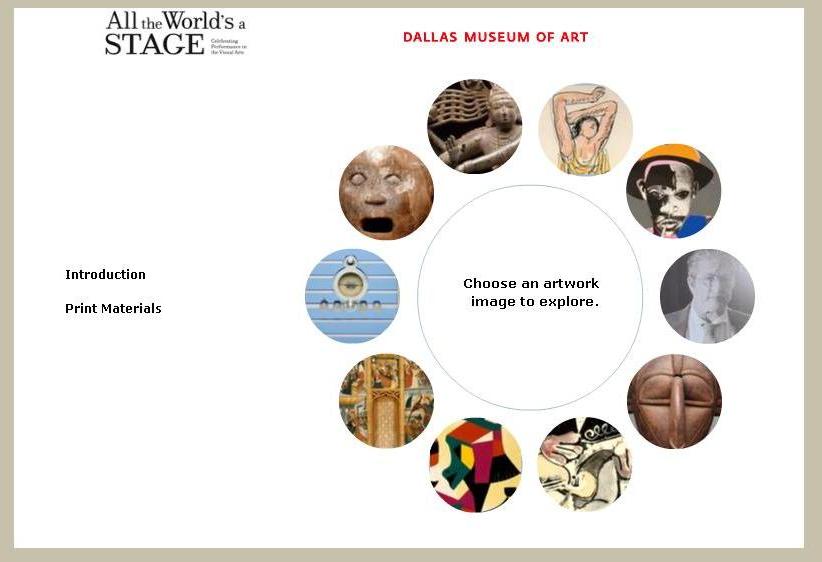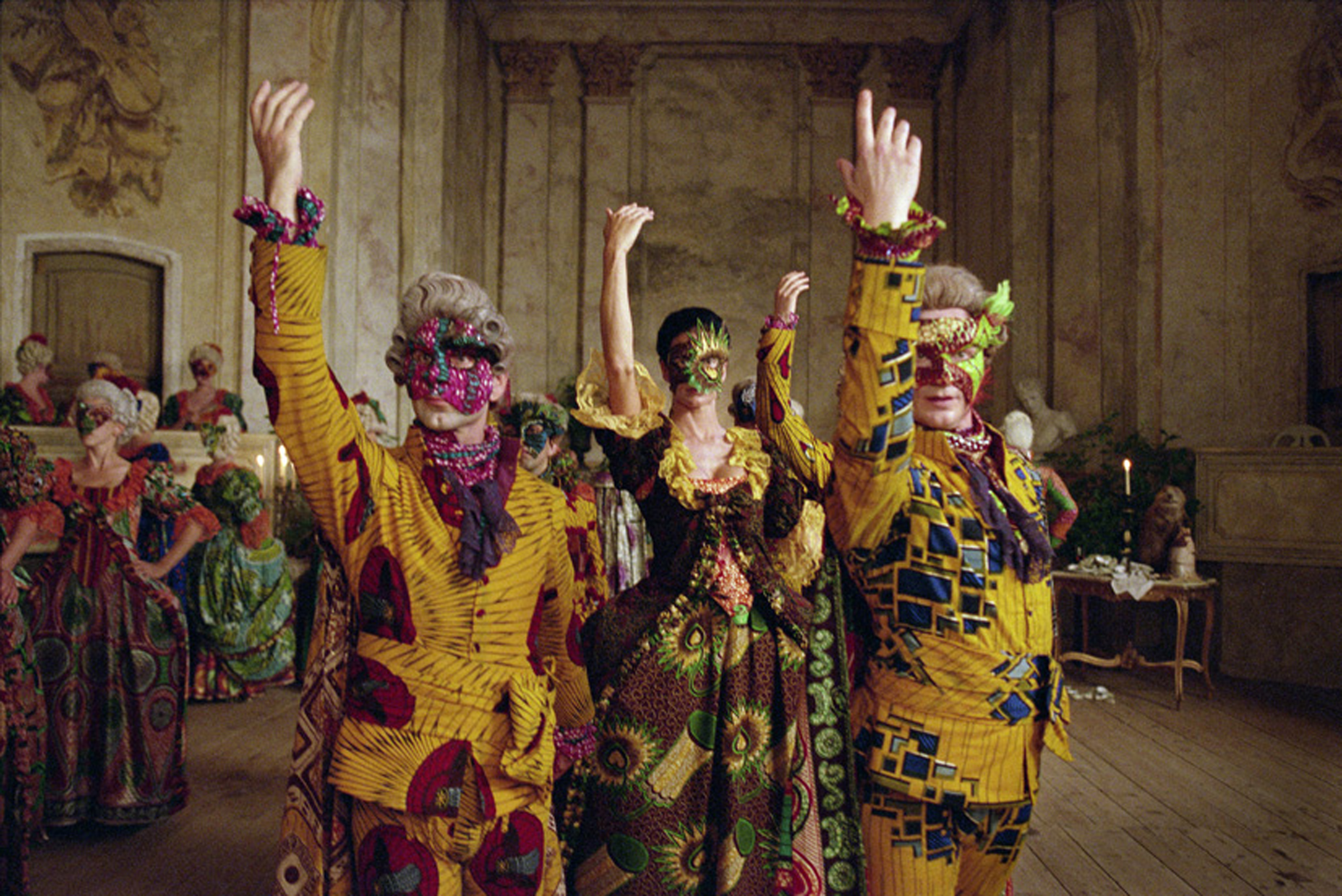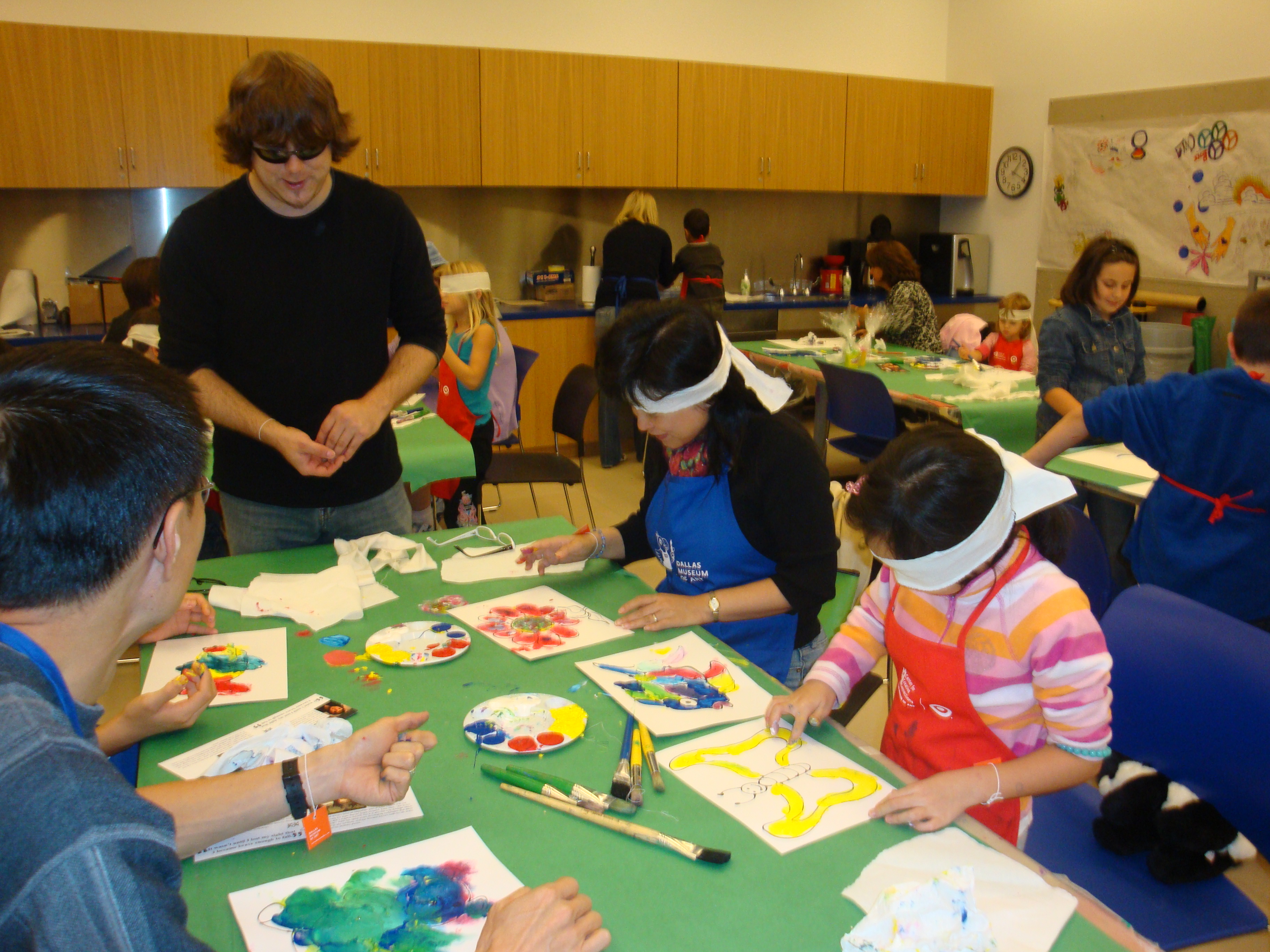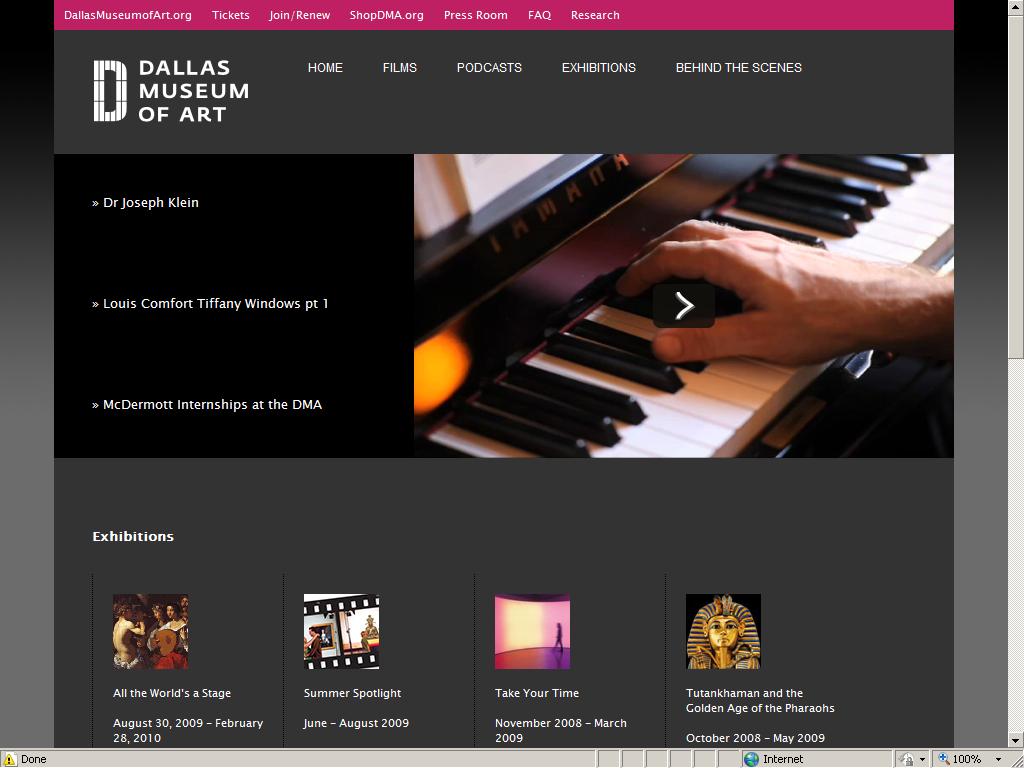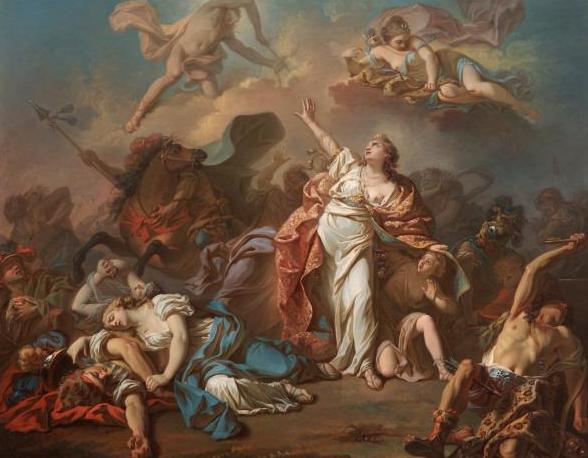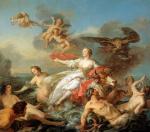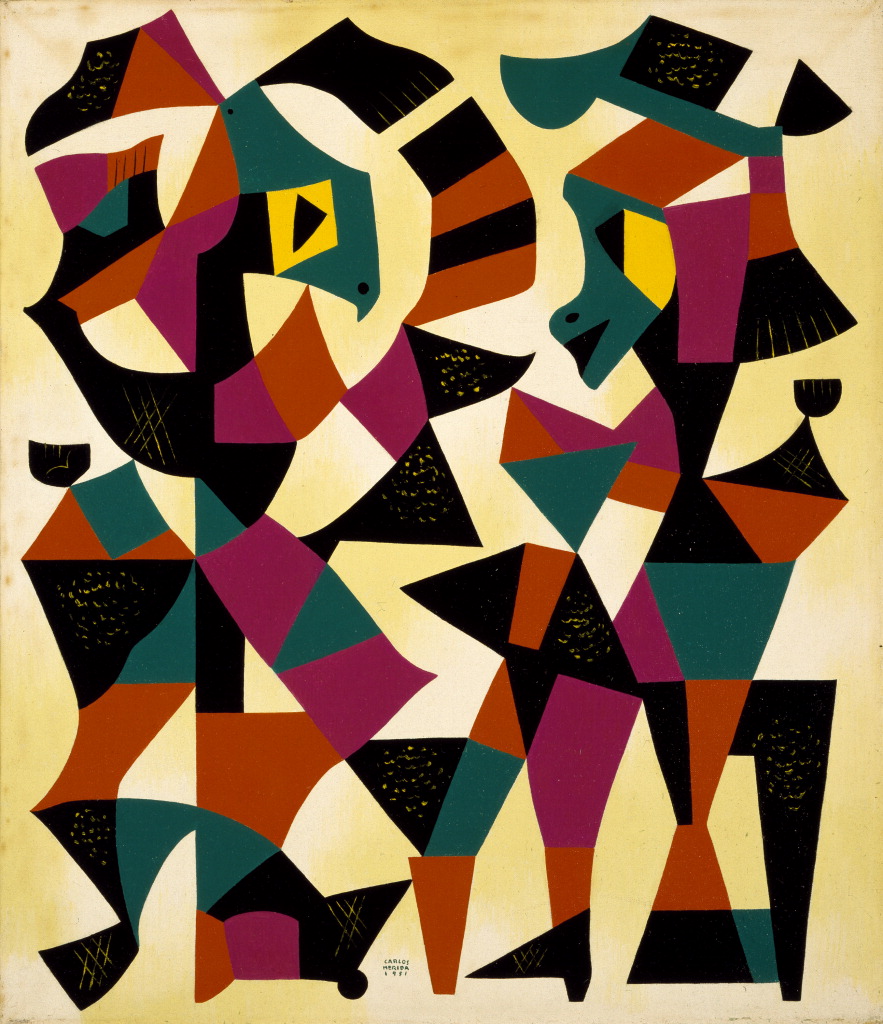
Dancers of Tlaxcala (Danzantes de Tlaxcala), Carlos Mérida, 1951
It’s an exciting time in the Arts District with the grand opening of the AT&T Performing Arts Center. In honor of our new neighbor, we’ve developed a new Go van Gogh school outreach program called Creative Connections: Lights, Camera, Action! that focuses on three diverse works of art in the Museum collection and invites students to respond creatively through movement and drama. Creative Connections programs are 90-minutes long, during which students participate in what we call “experiments” that involve collaborating with others, applying multiple approaches to solving problems, and producing a creative expression. These programs can be messy, loud, and challenging – and they are definitely a lot of fun.
If you’re a 3-6th grade teacher and don’t mind a little bit of noise in the classroom, I hope you’ll consider this program for your students. I promise you’ll be amazed and impressed by the creativity, thought, and enthusiasm they put into their performances. Requesting a program is easy with our online form.
With a background in art history and a bit of studio art, the task of writing a program about performance intimidated me. However, I have the great fortune of working with talented people, and I interviewed some of them during my initial research. I spoke with Lanita Sene, who I know through our partnership with the South Dallas Cultural Center. Lanita leads African dance and culture classes during Summer Arts at the Center. I also spoke with Blanca Reyna and Calvin Rollins, who I met through our partnership with the Ice House Cultural Center summer camp. Blanca specializes in Aztec culture, and Calvin is a dance student at Southern Methodist University (he also attended Booker T. Washington High School for the Performing and Visual Arts). Last, I spoke with my colleague Amy Copeland who studied dance at Booker T. Washington and other studios in the Dallas area.
This talented group provided many helpful ideas, like warm-up exercises that capture the students’ attention and focus. Another great suggestion was empowering students by giving them specialized roles in their performances and encouraging them to lead peer critiques.
I tested the program with 4th graders and 6th graders who created dances, music, masks, and skits inspired by artworks in our exhibition All the World’s a Stage: Performance in the Visual Arts. The shyest students contributed by helping to plan, write, and direct the performances. The boldest students reveled in the opportunity to show off in front of their peers. Afterward, one teacher remarked that it was fun seeing her students in a new light, and the other felt it was a great program for bilingual students.
This past Friday, I trained our volunteers and gave them the same challenges students experience during the program. I watched as they worked together in groups, sometimes giggling, at times with their brows furrowed. They all agreed that they can’t wait to bring the program to Dallas classrooms.
It’s showtime!
Melissa Nelson
Manager of Learning Partnerships with the Community
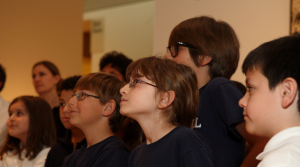

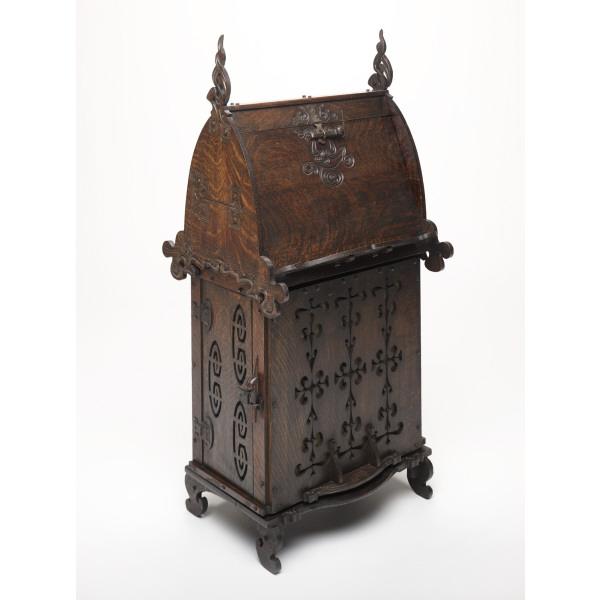
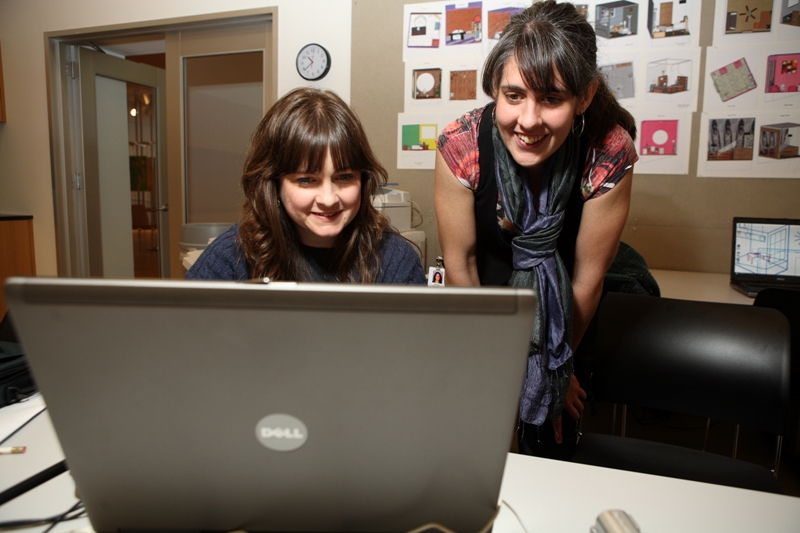 I invite you to make your way soon to the
I invite you to make your way soon to the 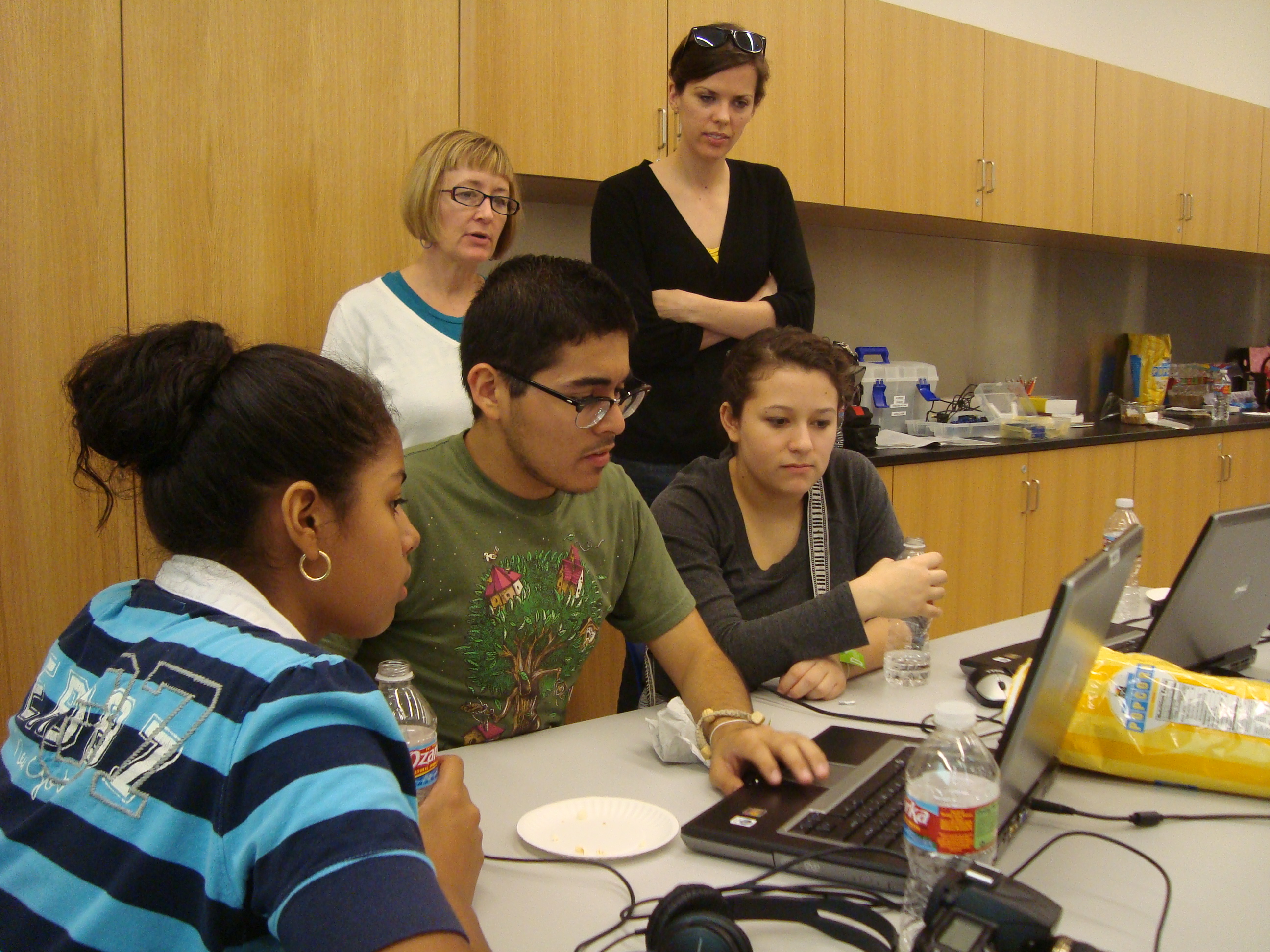 High School video club met with local painter and filmmaker,
High School video club met with local painter and filmmaker, 